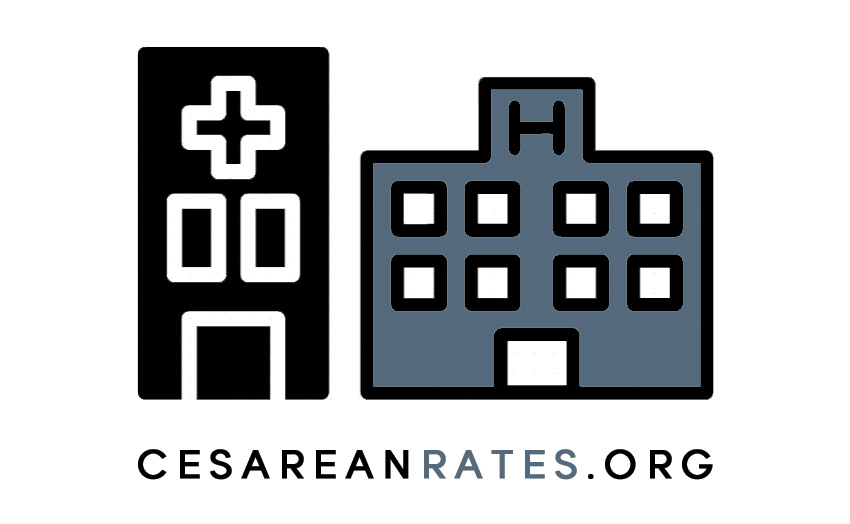Understanding the Obstetric Data Reporting Landscape
First published on February 8, 2012 with research presented by Jill Arnold at the APHA 139th Annual Meeting.
Updated in 2015 and 2017
Cesarean rates are one of many indicators of hospital quality that a patient might consider when deciding where to give birth. A patient with a strong preference to deliver vaginally might select the local hospital with the lowest cesarean rate, then find a care provider with privileges at that hospital.
Total cesarean rates are valuable for examining patterns of procedure utilization in large geographic areas. At the hospital level, the difference between a hospital with a 20% rate and a 60% rate might reflect the culture of the hospital, the type of hospital or health care system (non-profit versus for-profit corporation) or the philosophies of care providers working there in addition to the characteristics of the patients they serve. They are not, however, a reliable means of accurately comparing hospitals.
Hospitals have had the opportunity to voluntarily report their cesarean rate to the Joint Commission since 2010, yet only approximately 5% of hospitals did so as of 2012, when this report was first published on CesareanRates.com. Perinatal Core Measure PC-02, as the manual states, “seeks to focus attention on the most variable portion of the CS epidemic, the term labor CS in nulliparous women. This population segment accounts for the large majority of the variable portion of the CS rate, and is the area most affected by subjectivity.” Beginning in 2014, the Joint Commission will require accredited hospitals with more than 1,100 deliveries to report on the Perinatal Core Measures. [Update 5/2016: The Joint Commission threshold for deliveries was lowered to 300 effective January 1, 2016.]
In order to choose a hospital based in part on its cesarean rate, patients should be able to view total cesarean rates, cesarean rates of low-risk deliveries to first time mothers and VBAC rates.
Uploaded by Jill Arnold on March 9, 2012.
Hospitals have never been required by the federal government to report their cesarean rates to the public, though the majority of state departments of health have some type of public reporting protocol. New York and Massachusetts are the only states with a legislative mandate to provide patients with hospital-level maternity care data. The HCUP State Inpatient Databases, which are managed by the Agency for Healthcare Quality and Research, contains discharge data from hospitals in 48 states (Delaware and Idaho do not participate). HCUP’s Data Use Agreement specifically prohibits publicizing the data, which if aggregated would include total cesarean rates, even if patients and physicians are de-identified. This is out of concern for the “rights, benefits, or privileges of individual establishments,” not patients or providers.
In October 2015, The Leapfrog Group published C-section rates of the 1,122 hospitals that reported their NTSV rate via Leapfrog's annual survey. 2014 data on cesareans and other commonly performed maternity care procedures can be found on Leapfrog's web site. Consumer Reports licensed and analyzed Leapfrog's data to create their most recent Ratings, which are now accessible to consumers. Amino.com began offering limited physician-level cesarean rates online in 2016 for certain private payers.
The table below shows the primary mechanisms for reporting cesarean rates as well as their benefits and limitations. Not included are any independent reporting by facility, group, or individual care provider, nor the disaggregated data located on some state hospital association web sites.
November 2017: All states adopted the 2003 Revised Birth Certificate by January 1, 2016.



